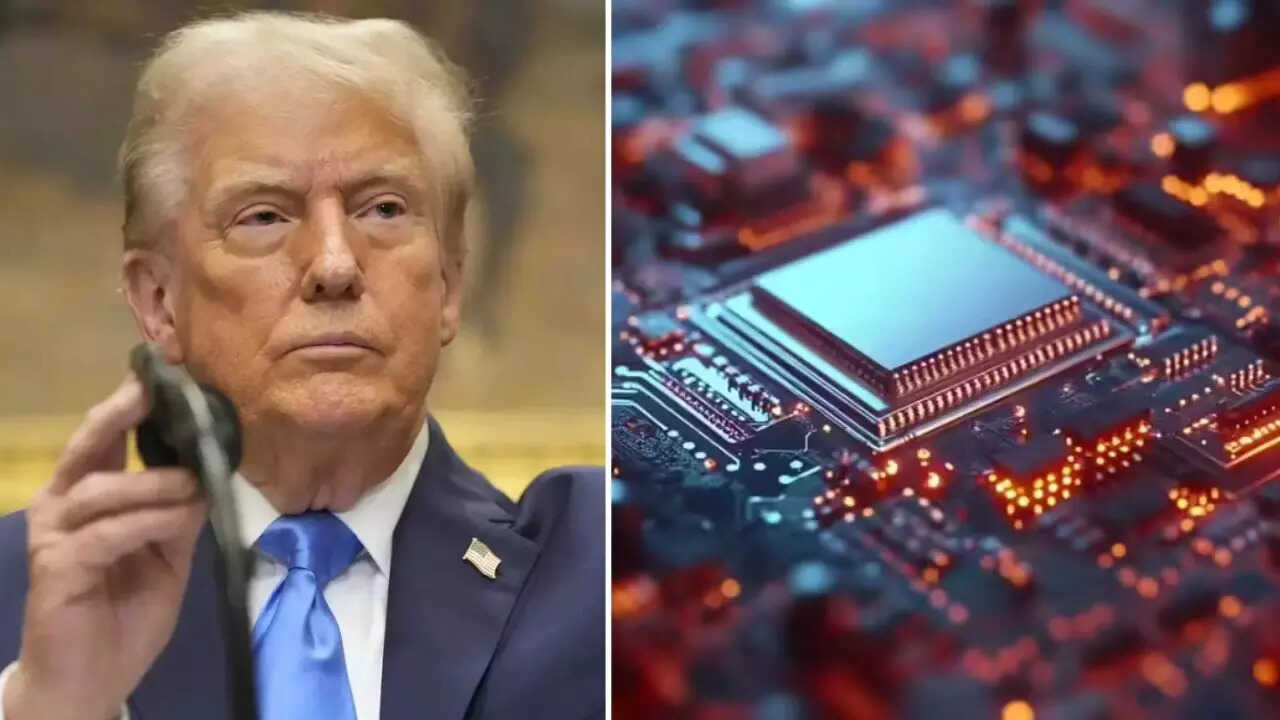The Trump administration is reportedly planning new tariffs on imported electronics, based on their chip content, to boost US manufacturing. This move could impose a 25% rate on chip value, potentially raising costs for American consumers and worsening inflation. Major chipmakers like TSMC and Samsung might face significant impact, as the policy aims to reshore critical production.
Chip Tariffs: A Bold Move or Economic Gamble?
The world of semiconductors, often unseen but utterly essential, is buzzing with speculation. A recent report suggests that the former Trump administration considered levying tariffs on foreign electronics containing chips, all in the name of national economic security. This isn’t just about trade; it’s a potential reshaping of the global tech landscape. So, what’s the story behind this possible protectionist measure, and what ripple effects could it create?
At its core, the idea stems from a desire to bolster domestic chip production and reduce reliance on foreign sources. Semiconductors are the brains behind everything from smartphones and cars to advanced weapons systems. Any disruption to their supply chain could have profound implications for a nation’s economy and security. Imagine car factories grinding to a halt because they can’t get the necessary chips, or critical infrastructure becoming vulnerable due to compromised components. It’s a scenario no nation wants to face.
The proposed tariffs, as the report outlines, would target imported electronics – the finished products that rely on these vital semiconductors. The rationale? To incentivize companies to source chips from American manufacturers or, at the very least, from countries considered friendly and reliable trading partners. Think of it as a strategy to create a more secure and geographically diverse semiconductor supply chain.

But like any major economic policy shift, this idea is fraught with potential complications. One immediate concern is the impact on consumers. Tariffs typically translate to higher prices, meaning everyday electronic devices – laptops, televisions, even appliances – could become more expensive. This could disproportionately affect lower-income households and dampen overall consumer spending.
Another crucial consideration is the potential for retaliation. Trade is a two-way street, and imposing tariffs often invites reciprocal measures from other countries. This could spark a full-blown trade war, damaging international relations and disrupting global supply chains even further. American companies that rely on exporting goods could find themselves at a disadvantage, facing higher tariffs in foreign markets.
Furthermore, the effectiveness of such tariffs in actually boosting domestic chip production is debatable. Building new semiconductor fabrication plants (fabs) is an incredibly expensive and time-consuming undertaking. It requires massive capital investment, a highly skilled workforce, and years of planning and construction. Even with government incentives, it’s not a guarantee that American companies will be able to ramp up production quickly enough to meet demand, especially considering the intense global competition in the semiconductor industry.
The global nature of the semiconductor supply chain also adds another layer of complexity. Many chips are designed in one country, manufactured in another, and assembled into finished products in yet another. Imposing tariffs on finished electronics might not necessarily address the underlying vulnerabilities in the earlier stages of the supply chain. Instead, it could simply shift assembly operations to countries outside the tariff zone, without truly strengthening American chip production capabilities.
A more targeted approach, focusing on strategic investments in domestic research and development, workforce training, and advanced manufacturing technologies, might prove to be a more effective and sustainable way to enhance national economic security. Such investments could foster innovation, create high-paying jobs, and position the United States as a leader in the semiconductor industry for the long term. Think government grants for cutting-edge research, partnerships between universities and industry, and tax incentives for companies that invest in domestic chip manufacturing.
Ultimately, the question isn’t simply whether to impose tariffs or not. It’s about finding the right mix of policies – including strategic investments, international collaborations, and targeted trade measures – that will ensure a secure, resilient, and competitive semiconductor supply chain for the future. This also requires clear communication and collaboration with industry stakeholders to develop solutions that are both effective and sustainable. Check out our article on the importance of investing in US STEM programs to support growth and innovation in the chip industry.
The idea of implementing semiconductor chip tariffs to safeguard national economic security is a complex issue with potentially far-reaching consequences. While the goal of strengthening domestic chip production is undoubtedly important, the potential risks and unintended consequences must be carefully weighed. A more nuanced and strategic approach, focused on fostering innovation, collaboration, and targeted investments, may ultimately prove to be a more effective path forward.







